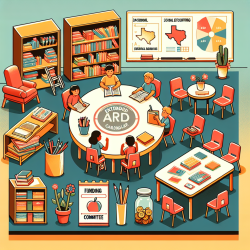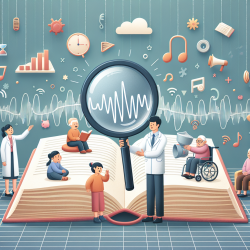Introduction
In the realm of speech-language pathology, understanding the intricate relationships between neurological disorders and cognitive functions is crucial. The research article "Cognitive Functions in Ataxia with Oculomotor Apraxia Type 2" provides valuable insights into how practitioners can enhance their therapeutic strategies by integrating findings from this study. This blog will delve into the key outcomes of the research and suggest ways practitioners can apply these insights to improve outcomes for children receiving online therapy services.
Understanding AOA2 and Its Cognitive Implications
Ataxia with oculomotor apraxia type 2 (AOA2) is a rare neurological disorder characterized by cerebellar atrophy, peripheral neuropathy, and oculomotor apraxia. The study conducted by Klivényi et al. (2012) is groundbreaking as it provides a detailed examination of cognitive functions in a patient with AOA2. The research highlights deficits in working memory, executive functions, speech, and sequence learning, which are vital areas for speech-language pathologists to address.
Applying Research Findings to Enhance Therapy
Practitioners can leverage the findings from this study to refine their therapeutic approaches. Here are some strategies to consider:
- Focus on Working Memory: Incorporate exercises that enhance working memory capacity, such as backward digit span tasks and listening span tasks. These activities can help improve cognitive flexibility and memory retention in children.
- Enhance Executive Functions: Utilize verbal fluency tasks to strengthen executive functions. Encouraging children to generate words within specific categories can improve their cognitive processing speed and flexibility.
- Address Speech and Articulation: Given the study's findings on speech tempo and articulation rate, speech-language pathologists should focus on exercises that improve speech clarity and reduce pause ratios. Techniques such as pacing boards and metronome-based speech exercises can be beneficial.
- Incorporate Sequence Learning: Activities that promote implicit sequence learning, such as serial reaction time tasks, can be integrated into therapy sessions to enhance cognitive sequencing abilities.
Encouraging Further Research
While the study provides significant insights, it also underscores the need for further research. Speech-language pathologists are encouraged to contribute to the growing body of knowledge by conducting studies on larger populations with AOA2. This will help refine therapeutic approaches and improve the understanding of the cerebellum's role in cognitive functions.
Conclusion
By integrating the findings from "Cognitive Functions in Ataxia with Oculomotor Apraxia Type 2," practitioners can enhance their therapeutic strategies and create better outcomes for children. The study not only provides a deeper understanding of AOA2 but also offers a framework for improving cognitive functions through targeted therapy.
To read the original research paper, please follow this link: Cognitive Functions in Ataxia with Oculomotor Apraxia Type 2.










